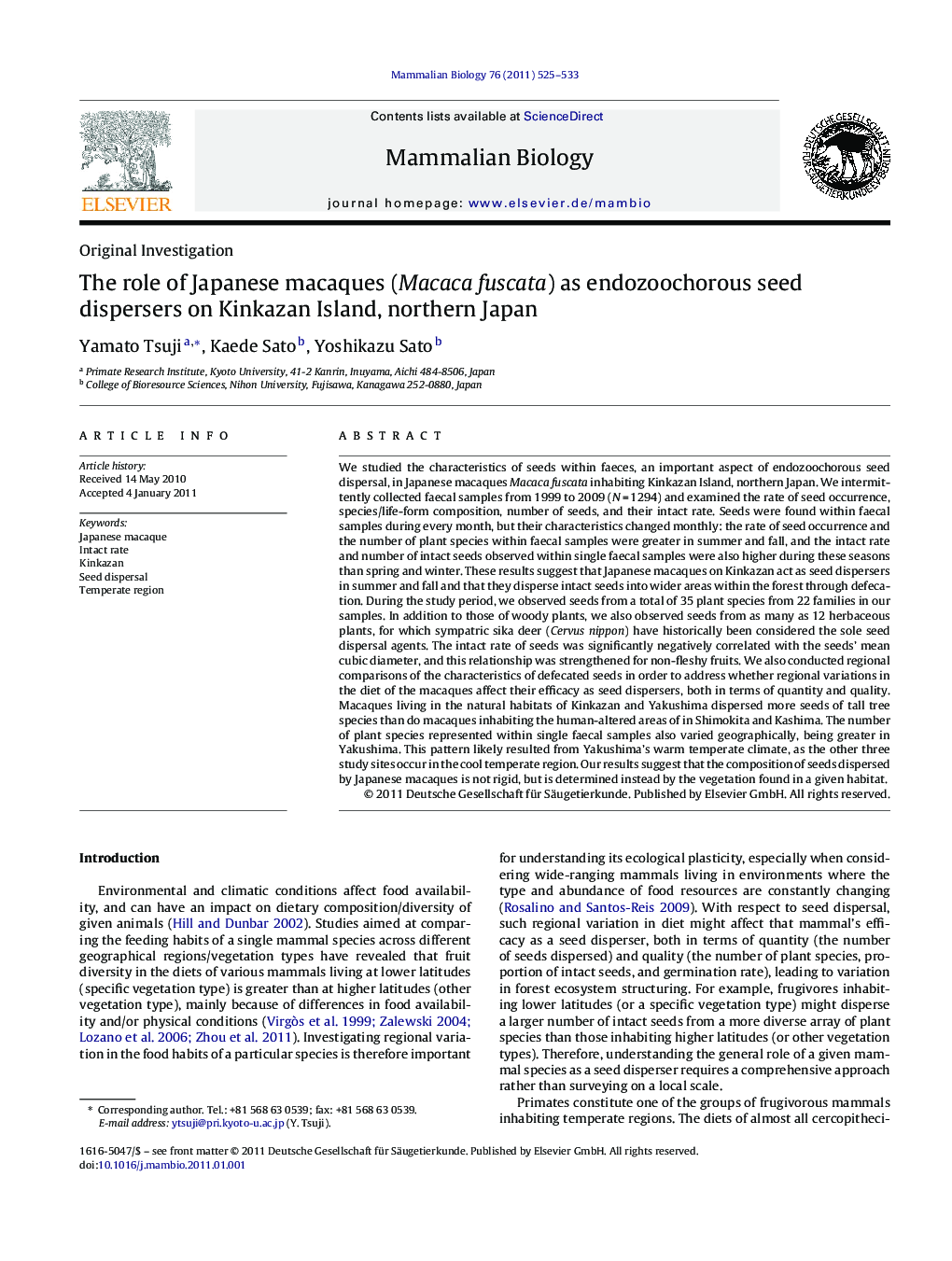| کد مقاله | کد نشریه | سال انتشار | مقاله انگلیسی | نسخه تمام متن |
|---|---|---|---|---|
| 10955846 | 1098405 | 2011 | 9 صفحه PDF | دانلود رایگان |
عنوان انگلیسی مقاله ISI
The role of Japanese macaques (Macaca fuscata) as endozoochorous seed dispersers on Kinkazan Island, northern Japan
دانلود مقاله + سفارش ترجمه
دانلود مقاله ISI انگلیسی
رایگان برای ایرانیان
موضوعات مرتبط
علوم زیستی و بیوفناوری
علوم کشاورزی و بیولوژیک
علوم دامی و جانورشناسی
پیش نمایش صفحه اول مقاله

چکیده انگلیسی
We studied the characteristics of seeds within faeces, an important aspect of endozoochorous seed dispersal, in Japanese macaques Macaca fuscata inhabiting Kinkazan Island, northern Japan. We intermittently collected faecal samples from 1999 to 2009 (NÂ =Â 1294) and examined the rate of seed occurrence, species/life-form composition, number of seeds, and their intact rate. Seeds were found within faecal samples during every month, but their characteristics changed monthly: the rate of seed occurrence and the number of plant species within faecal samples were greater in summer and fall, and the intact rate and number of intact seeds observed within single faecal samples were also higher during these seasons than spring and winter. These results suggest that Japanese macaques on Kinkazan act as seed dispersers in summer and fall and that they disperse intact seeds into wider areas within the forest through defecation. During the study period, we observed seeds from a total of 35 plant species from 22 families in our samples. In addition to those of woody plants, we also observed seeds from as many as 12 herbaceous plants, for which sympatric sika deer (Cervus nippon) have historically been considered the sole seed dispersal agents. The intact rate of seeds was significantly negatively correlated with the seeds' mean cubic diameter, and this relationship was strengthened for non-fleshy fruits. We also conducted regional comparisons of the characteristics of defecated seeds in order to address whether regional variations in the diet of the macaques affect their efficacy as seed dispersers, both in terms of quantity and quality. Macaques living in the natural habitats of Kinkazan and Yakushima dispersed more seeds of tall tree species than do macaques inhabiting the human-altered areas of in Shimokita and Kashima. The number of plant species represented within single faecal samples also varied geographically, being greater in Yakushima. This pattern likely resulted from Yakushima's warm temperate climate, as the other three study sites occur in the cool temperate region. Our results suggest that the composition of seeds dispersed by Japanese macaques is not rigid, but is determined instead by the vegetation found in a given habitat.
ناشر
Database: Elsevier - ScienceDirect (ساینس دایرکت)
Journal: Mammalian Biology - Zeitschrift für Säugetierkunde - Volume 76, Issue 5, September 2011, Pages 525-533
Journal: Mammalian Biology - Zeitschrift für Säugetierkunde - Volume 76, Issue 5, September 2011, Pages 525-533
نویسندگان
Yamato Tsuji, Kaede Sato, Yoshikazu Sato,